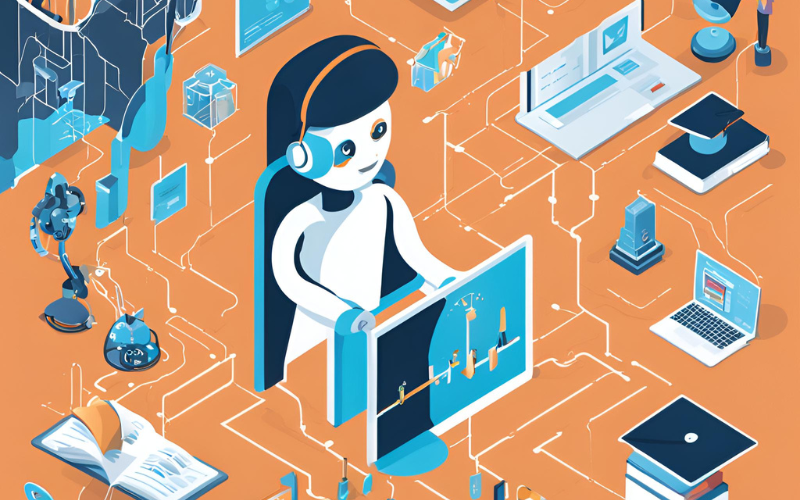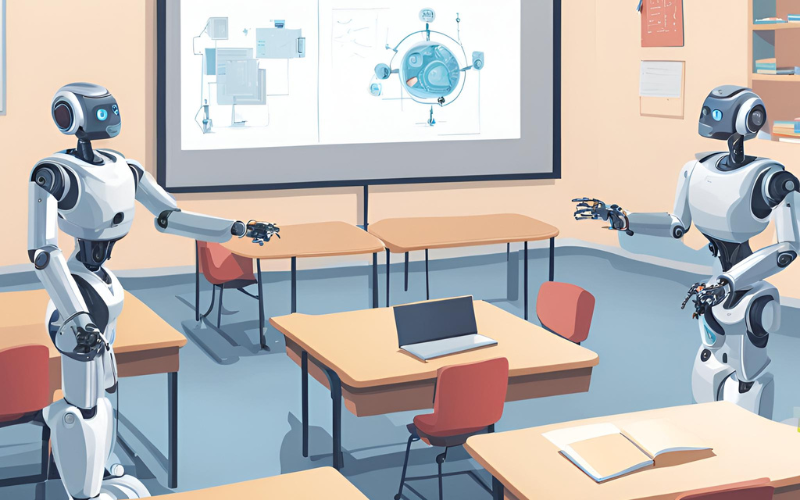I recently learned about the Artificial Intelligence (AI) Institutes established through funding from the National Science Foundation (NSF) and its partners. According to the National Science Foundation website, these Institutes are the only U.S. government-funded artificial intelligence initiatives outside of the Department of Defense.
The National Science Foundation and a few other non-defense federal agencies launched the National AI Research Institutes program in October 2019. The Institutes are structured to be hubs of research and education; and each Institute is designed to address a specific AI challenge.
Seven Institutes were announced in 2020. Here is a short description of each one, including the name of the academic institution where it resides.
1. NSF AI Institute for Research on Trustworthy AI in Weather, Climate and Coastal Oceanography – Led by the University of Oklahoma, the Institute conducts research to improve the accuracy and reliability of AI techniques used for weather forecasting models. The Institute also offers AI training certificates to help build an AI-trained workforce.
2. NSF AI Institute for Foundations of Machine Learning – Led by the University of Texas at Austin, the Institute’s research addresses the fundamental challenges and applications of machine learning that will form the foundation for developing safer and more reliable AI applications such as self-driving cars.
3. NSF AI Institute for Student-AI Teaming – Led by the University of Colorado at Boulder, the Institute’s research focuses on developing AI partners that will facilitate collaborative learning by interacting with speech, gesture, gaze, and facial expression in classrooms.
4. NSF AI Institute for Molecular Discovery, Synthetic Strategy, and Manufacturing – Led by the University of Illinois at Urbana-Champaign, the Institute’s research seeks to develop new AI techniques to streamline and accelerate molecular synthesis and the discovery of new materials.
5. NSF AI Institute for Artificial Intelligence and Fundamental Interactions – Led by the Massachusetts Institute of Technology (MIT), the Institute will work to build AI methods that incorporate basic physics principles with a goal to make data-analysis choices more targeted.
6. AI Institute for Next Generation Food Systems (sponsored by the United States Department of Agriculture [USDA]) – Led by the University of California at Davis, the Institute’s research focuses on using AI to address issues in food processing, distribution, and nutrition.
7. AI Institute for Future Agricultural Resilience, Management, and Sustainability (sponsored by the USDA) – Led by the University of Illinois at Urbana-Champaign, the Institute addresses pushing AI techniques to improve research in computer vision, machine learning, soft object manipulation, and intuitive human-robot interaction to solve major agricultural challenges including the environmental resilience of crops and the efficiency and welfare of animal agriculture.
When these seven Institutes were launched, the NSF also announced its intent to form robust partnerships with industry, nonprofits, and government agencies to understand how AI will impact workers and how to address potential risks such as algorithmic biases and job loss. Some of these partners include Amazon (for fairness in AI), Intel Corporation (machine learning for wireless networking systems), the nonprofit Partnership on AI for sociotechnical AI systems), and the Defense Advanced Research Projects Agency (novel hardware systems enabling real-time machine learning).
Recently, NSF announced funding awards for 11 additional Institutes. Each institute will receive approximately $20 million over a five-year period.
1. NSF AI Institute for Collaborative Assistance and Responsive Interaction for Networked Groups (partial funding by Amazon and Google) – Led by the Georgia Institute of Technology (Georgia Tech), the Institute will seek to develop a discipline focused on personalized, longitudinal, and collaborative AI systems that learn human behavior and use that knowledge to collaborate and communicate in caregiving environments designed to support the independence and quality of life for a growing population of older adults.
2. NSF AI Institute for Advances in Optimization (partial funding by Intel) – Led by Georgia Tech, the Institute will seek to fuse AI and mathematical optimization into systems that will achieve breakthroughs that neither discipline can achieve separately. The Institute will create pathways from high school to undergrad and graduate education as well as workforce development training for AI in engineering.
3. NSF AI Institute for Learning-Enabled Optimization at Scale (partially funded by Intel) – Led by the University of California at San Diego working in collaboration with five other universities, the Institute will address the fundamental challenges of scale and complexity. There are plans for workforce development as well as broadening participation at K-20 education levels.
4. NSF AI Institute for Intelligent Cyberinfrastructure with Computational Learning in the Environment – Led by Ohio State University, the Institute will build the next generation of cyber infrastructure that will make AI easy for scientists to use and promote its further democratization. The Institute will develop a new generation of the workforce with diversity and inclusion at all levels.
5. NSF AI Institute for Future Edge Networks and Distributed Intelligence (partially funded by the Department of Homeland Security) – Led by Ohio State University, the Institute will leverage the synergies between networking and AI to design future generations of wireless edge networks that are highly efficient, reliable, robust, and secure. New AI tools will be developed to make these networks self-healing and self-optimized.
6. NSF AI Institute for Edge Computing Leveraging Next Generation Networks (partially funded by the Department of Homeland Security) – Led by Duke University collaborating with six other universities, the Institute will focus on developing edge computing using AI for future systems from mobile devices to networks while keeping complexity and cost under control. It is committed to educating and developing the workforce.
7. NSF AI Institute in Dynamic Systems (partially funded by the Department of Homeland Security) – Led by the University of Washington, this Institute will integrate physics-based models with AI and machine learning tools leading to development of data-enabled, ethical, efficient, and explainable solutions for real time sensing, prediction, and decision making across science and engineering.
8. NSF AI Institute for Engaged Learning – Led by North Carolina State University, the Institute will advance natural language processing, computer vision, and machine learning to engage learners in AI-driven, narrative-centered learning environments. The Institute will serve as a nexus for in-school and out-of-school STEM education innovation.
9. NSF AI Institute for Adult Learning and Online Education (partially funded by Accenture) – Led by the Georgia Research Alliance, the Institute will develop AI techniques for enhancing the quality of adult online education, making it comparable to in-person learning for science, technology, engineering and mathematics (STEM) programs.
10. The USDA-NIFA Institute for Agricultural AI for Transforming Workforce and Decision Support (funded by USDA-NIFA) – Led by Washington State University, the Institute will integrate AI methods into agricultural operations for prediction, decision support, and robotics-enabled agriculture to address complex agricultural challenges.
11. The AI Institute for Resilient Agriculture (funded by USDA-NIFA) – Led by Iowa State University, this Institute will transform agriculture through innovative AI-driven digital twins that model plants at an unprecedented scale.
According to the National Science Foundation, it has funded approximately $1.5 billion in AI research over the past three years, averaging $500 million per year. While this amount is decidedly less than other nations like China have spent, it’s an improvement and increase for U.S. government funding of artificial intelligence outside of the Department of Defense.
The National Science Foundation also states that these initiatives include funding for AI research at institutions based in 40 states. Looking at the inverse, there are 10 states that are not going to benefit from AI research funding as quickly as the other states. The funding among the 40 states is more heavily weighted toward a few, and those few appear to be based in states with growing populations.
It’s notable that three of the 18 Institutes are dedicated toward conducting research on AI’s ability to improve learning. Many of the Institutes include workforce development initiatives in their charter. The workforce development and education initiatives are very relevant given the plethora of books and articles warning about AI’s impact on future jobs.
While some of the 18 Institutes are dedicated to industry-specific research such as agriculture and education, it’s my prediction that there will be more industry-dedicated AI research Institutes. Between states seeking solutions for displaced workers and companies seeking solutions for combating competition from foreign companies and/or very large, technology-enabled corporations, there will be pressure for research aiding our workers and their employers.
The funding of these Institutes is recent, so major developments at this point are unlikely. I look forward to reading future reports about the goals achieved by each Institute, particularly those focused on improving education.











